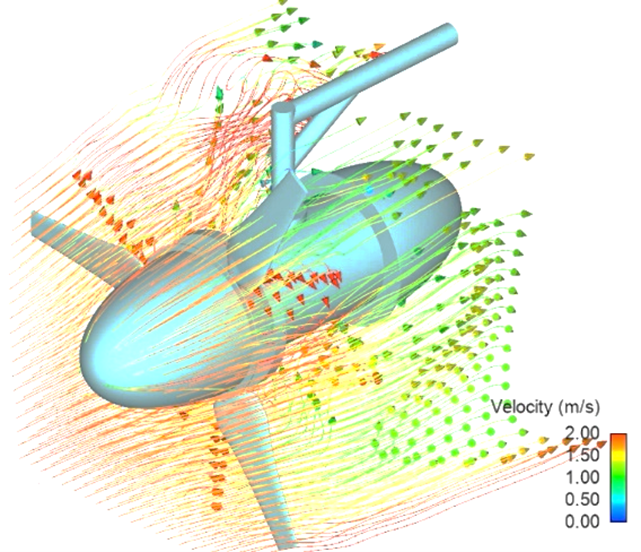IHPC Tech Hub
Discover the power of computational modelling, simulation and AI that brings about positive impact to your business.
- Health & Human Potential
- Manufacturing & Engineering
- Smart Nation & Digital Economy
- Transport & Connectivity
- Urban Solutions & Sustainability
Tidal Turbine for Sustainable Ocean Energy
Among the renewable energy sources, the ocean has the highest energy density compared to wind, solar, biomass, and geothermal. Traditional design spiral and model test cycles of ocean energy devices are expensive and time-consuming. Not only does the use of CFD offers a practical and cost-effective alternative, but it also provides a better understanding of the flow field for improved design, optimisation, and operation.
With the development and application of the digital tool, the research team has designed a tidal turbine to convert tidal energy into electricity in terms of ebb (the reflux of the tide toward the sea) and flood tides. This tidal turbine has symmetrical hydrofoils for a bi-directional and counter-rotating ocean flow.
Features
- High-fidelity CFD simulations for performance evaluations
- High-efficient and cost-effective
- Digitalisation for design innovation
The Science Behind
Tidal currents in terms of ebb and flood tides are approximately bidirectional. A Horizontal Axial Tidal Turbine (HATT) must always be able to face the tidal current directions to maximise its energy harvesting capability. Like a wind turbine, the tidal turbine could be either designed with a yaw or pitch control mechanism to keep the turbine always facing the current direction. However, neither the yaw nor pitch control solution is cost-effective in terms of harsh environmental conditions, installation, operation, or maintenance. To address this challenge, A*STAR’s Institute of High Performance (IHPC) team designed a bi-directional turbine blade.

Fig 1. Diagram of ocean flow across the bi-directional tidal turbine
A bi-directional fully symmetrical blade (Fig 1) and a hub design are conceptualised and analysed at various rotational speeds to determine the turbine efficiency for the specified scenarios. High-fidelity CFD simulations help to achieve optimal performance under various environmental and operational conditions, as well as drive digital design innovation in ocean energy device development. Currently, the team is preparing the site testing and data acquisition for verification and future design improvement.
Industry Applications
- Marine and Offshore: Tidal turbines; Offshore wind turbine/Farm; Propeller
- Aerospace: Compressor, Fan, Turbine
- Other industries: Pump
For more info or collaboration opportunities, please write to enquiry@ihpc.a-star.edu.sg.
Glossary
#1 The Third Pillar of Science
A*STAR celebrates International Women's Day

From groundbreaking discoveries to cutting-edge research, our researchers are empowering the next generation of female science, technology, engineering and mathematics (STEM) leaders.
Get inspired by our #WomeninSTEM
.png?sfvrsn=ff199933_15)